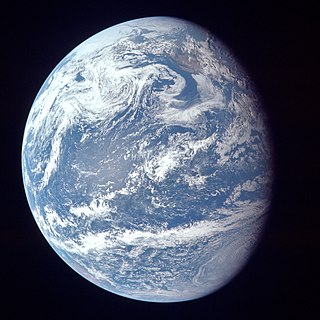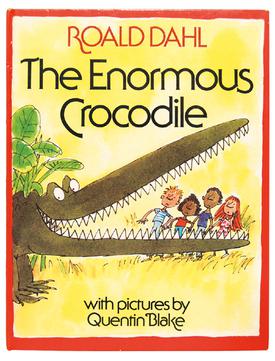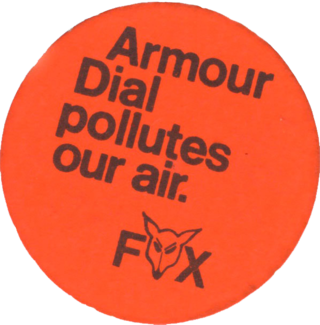Plot
The story about these Wumps takes place on their own planet, hence the name The Wump World. It is a small version of Earth, containing only a few rivers and lakes, along with several grasslands and forests. A race of blue humanoids named the Pollutians, who have left their old worn out planet to search for a new home, arrive and overrun the Wump World, causing the Wumps to flee to the safety of caves. The Pollutians build great cities and colonize, dirtying the air, water, and plowing down entire forests and grasslands, which the Wumps rely on for food and water. The Pollutians reach trouble when the air becomes too polluted, and their leaders send scouts to search for another planet. One scout returns, claiming that he has found a bigger and better world (presumably Earth); upon hearing this news, the entire Pollutian populace leaves the planet, leaving their thickly polluted cities behind. When the world above grows quiet, the Wumps emerge to find a changed world, a deserted "concrete jungle". The Pollutians, having used up almost every natural resource, have left. Fortunately for the Wumps, they find a part of the world still filled with living plant life (including trees and grass) and a river. As time goes by, the pollution begins to clear up and the cities slowly begin to age and fall apart. Though the book ends with a message of hope about nature's ability to recover and a small plant sprouting up between the cracks of a sidewalk, it notes that the Wump World would never be quite the same, but it would recover one day.
The book is similar to Peet's previous work Farewell to Shady Glade . Dr. Seuss's The Lorax , another similar book, was also published the year after.

A biome is a distinct geographical region with specific climate, vegetation, and animal life. It consists of a biological community that has formed in response to its physical environment and regional climate. Biomes may span more than one continent. A biome encompasses multiple ecosystems within its boundaries. It can also comprise a variety of habitats.

Extraterrestrial life, alien life, or colloquially simply aliens is life which does not originate from Earth. No extraterrestrial life has yet been conclusively detected. Such life might range from simple forms such as prokaryotes to intelligent beings, possibly bringing forth civilizations that might be far more advanced than humanity. The Drake equation speculates about the existence of sapient life elsewhere in the universe. The science of extraterrestrial life is known as astrobiology.

Apocalyptic and post-apocalyptic fiction is a subgenre of science fiction in which the Earth's civilization is collapsing or has collapsed. The apocalypse event may be climatic, such as runaway climate change; astronomical, such as an impact event; destructive, such as nuclear holocaust or resource depletion; medical, such as a pandemic, whether natural or human-caused; end time, such as the Last Judgment, Second Coming or Ragnarök; or any other scenario in which the outcome is apocalyptic, such as a zombie apocalypse, cybernetic revolt, technological singularity, dysgenics or alien invasion.

The hydrosphere is the combined mass of water found on, under, and above the surface of a planet, minor planet, or natural satellite. Although Earth's hydrosphere has been around for about 4 billion years, it continues to change in shape. This is caused by seafloor spreading and continental drift, which rearranges the land and ocean.

A grassland is an area where the vegetation is dominated by grasses (Poaceae). However, sedge (Cyperaceae) and rush (Juncaceae) can also be found along with variable proportions of legumes, like clover, and other herbs. Grasslands occur naturally on all continents except Antarctica and are found in most ecoregions of the Earth. Furthermore, grasslands are one of the largest biomes on Earth and dominate the landscape worldwide. There are different types of grasslands: natural grasslands, semi-natural grasslands, and agricultural grasslands. They cover 31–69% of the Earth's land area.

William Bartlett Peet was an American children's book illustrator and a story writer and animator for Walt Disney Animation Studios.

The natural environment or natural world encompasses all living and non-living things occurring naturally, meaning in this case not artificial. The term is most often applied to Earth or some parts of Earth. This environment encompasses the interaction of all living species, climate, weather and natural resources that affect human survival and economic activity. The concept of the natural environment can be distinguished as components:

Protector is a 1973 science fiction novel by American writer Larry Niven, set in his Known Space universe. It was nominated for the Hugo in 1974, and placed fourth in the annual Locus poll for that year.

The Enormous Crocodile is a British children's story, written by British author Roald Dahl and illustrated by Quentin Blake. A picture book written for younger readers than Dahl's other works, the story tells of a hungry crocodile who aims to eat human children via using various, not-quite-impenetrable disguises.
Extraterrestrial is a British-American two-part television documentary miniseries, aired in 2005 in the UK by Channel 4, by the National Geographic Channel in the US on Monday, May 30, 2005 and produced by Big Wave Productions Ltd. The program focuses on the hypothetical and scientifically feasible evolution of alien life on extrasolar planets, providing model examples of two different fictional worlds, one in each of the series's two episodes.

Pure Earth is a New York City-based international not-for-profit organization founded in 1999 that works to identify, clean up, and solve pollution problems in low- and middle-income countries, where high concentrations of toxic pollution have devastating health impacts, especially on children. These communities suffer disproportionately from pollution-related diseases. Pure Earth remains the only significant organization of its kind working to solve pollution on a global scale.

Are We Changing Planet Earth? and Can We Save Planet Earth? are two programmes that form a documentary about global warming, presented by David Attenborough. They were first broadcast in the United Kingdom on 24 May and 1 June 2006 respectively.

James F. Phillips was an American schoolteacher and environmental activist who became known in the Chicago area during the 1960s for his environmental direct action under the pseudonym The Fox.

The Living Planet: A Portrait of the Earth is a BBC nature documentary series written and presented by David Attenborough, first transmitted in the UK from 19 January 1984.
Aftermath is a 2010 Canadian-American documentary television series created by History Canada and produced by Cream Productions. It aired on National Geographic in the United States.
Last Day of the Dinosaurs is a 2010 Discovery Channel television documentary about the extinction of the non-avian dinosaurs. It portrays the Alvarez hypothesis as the cause of extinction. The documentary was released on August 28, 2010 and narrated by Bill Mondy.
At the global scale sustainability and environmental management involves managing the oceans, freshwater systems, land and atmosphere, according to sustainability principles.

The Najafgarh drain or Najafgarh nalah, which also acts as Najafgarh drain bird sanctuary, is another name for the northernmost end of River Sahibi, which continues its flow through Delhi, where it is channelized, and then flows into the Yamuna. Within Delhi, due to its channelization for flood control purposes, it is now erroneously called "Najafgarh drain" or "Najafgarh nullah." It gets this name from the once famous and huge Najafgarh Jheel (lake) near the town of Najafgarh in southwest Delhi and within urbanized Delhi. It is the Indian capital’s most polluted water body due to direct inflow of untreated sewage from surrounding populated areas. A January 2005 report by the Central Pollution Control Board classifies this drain, with 13 other highly polluted wetlands, under category ‘‘D’’ for assessing the water quality of wetlands in wildlife habitats.

Environmental issues in Singapore include air, water pollution, and deforestation. The government established the Singapore Green Plan in 1992 to help with environmental issues.
"Vaster than Empires and More Slow" is a science fiction story by American author Ursula K. Le Guin, first published in the collection New Dimensions 1, edited by Robert Silverberg. It is set in the fictional Hainish universe, where Earth is a member of an interstellar "League of Worlds". The anthology was released in United States in 1971, by Doubleday Books.















